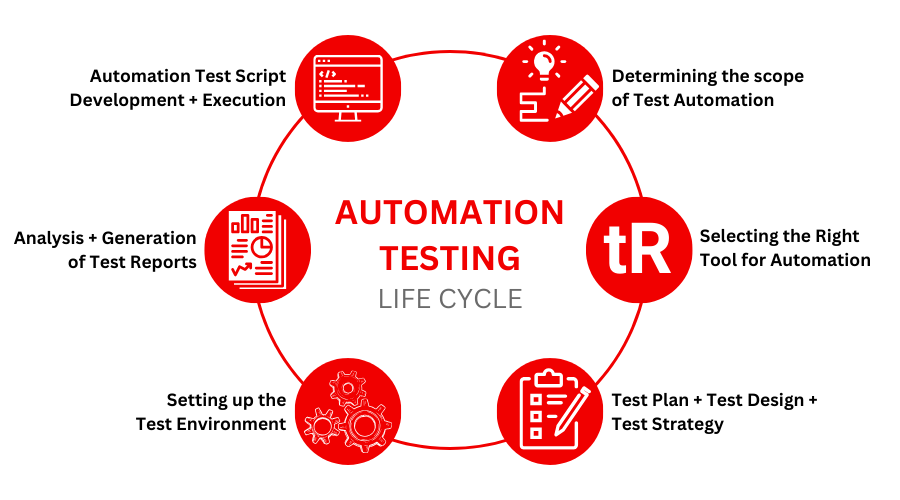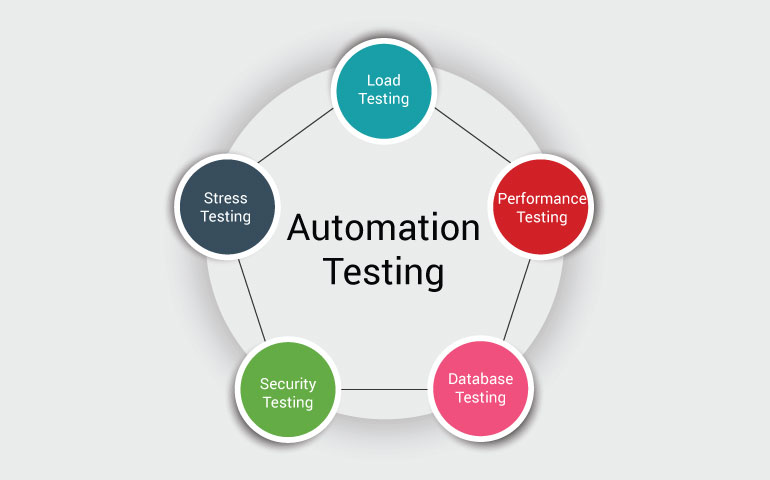Making Certain Success in Automation Examining: Secret Metrics, Difficulties, and Solutions Every QA Group Must Know
In the world of software application quality guarantee, the landscape of automation testing is ever-evolving, requiring a meticulous technique to make sure seamless operations. Key metrics work as the compass assisting QA groups with the huge surface of examination automation, dropping light on progression and locations for improvement. Obstacles loom large, typically casting darkness on the path to success. By recognizing these obstacles and implementing reliable remedies, QA groups can browse with intricacies with skill. The journey to mastering automation screening is led with nuances that require an eager eye for tracking, evaluation, and constant enhancement. automation testing. As the market moves forward, the mission for ideal performance in automation screening stays a consistent search, prompting QA groups to outfit themselves with the expertise and strategies important for triumph.
Significance of Key Metrics
Recognizing the relevance of essential metrics is vital for evaluating the performance and efficiency of automation screening processes. Secret metrics function as quantifiable steps that supply useful understandings into different facets of the screening procedure, such as examination insurance coverage, examination execution time, problem density, and examination situation effectiveness. By evaluating these metrics, QA teams can recognize traffic jams, ineffectiveness, and areas for renovation within their automation screening framework.
One important element of essential metrics is their capability to track development and keep an eye on the general health of the testing procedure (automation testing). They allow stakeholders to make informed decisions based upon data-driven understandings, which can bring about much more efficient screening methods and better source allotment. In addition, crucial metrics can help groups set practical goals, gauge the success of automation efforts, and demonstrate the ROI of automation screening efforts

Typical Obstacles Encountered
Difficulties commonly run into in automation testing processes can dramatically affect the total effectiveness and effectiveness of QA teams. Automation screening might not cover all aspects of screening, such as usability and customer experience testing, which still need manual treatment. Conquering these difficulties calls for proper planning, calculated examination instance option, robust maintenance procedures, adequate resources, and a clear understanding of the restrictions of automation testing.
Efficient Solutions for Obstacles
To resolve the challenges run into in automation testing, executing effective solutions is vital for boosting the performance and performance of QA teams. One key remedy is to invest in durable training programs for QA groups to ensure they have the essential abilities to efficiently utilize automation tools. Training can link understanding gaps, boost understanding of automation frameworks, and enhance scripting capacities, ultimately bring about a lot more effective examination development and execution.
An additional crucial service is to develop clear communication channels within the QA group and with other stakeholders, such as programmers and task supervisors. useful source Effective interaction assists in aligning assumptions, sharing development updates, and immediately attending to problems or roadblocks that may emerge throughout the automation screening process.

Tracking and Analysis Strategies
Applying efficient tracking and evaluation strategies is vital for guaranteeing the success and efficiency of automation screening procedures. By using monitoring devices, QA teams can track the performance of examination scripts, recognize traffic jams, important site and identify areas for renovation. Real-time tracking permits quick discovery of concerns, allowing rapid response and resolution. Additionally, evaluating test outcomes and metrics supplies useful insights into the top quality of the software application being evaluated and the effectiveness of the screening approach.
One key method in surveillance and analysis is making use of control panels that settle relevant metrics and KPIs in a visually easily accessible layout. These dashboards provide a thorough summary of test execution condition, examination insurance coverage, defect patterns, and various other crucial info. Regularly evaluating and examining these control panels can aid QA groups make educated choices, focus on jobs, and maximize screening initiatives.
Furthermore, implementing automated alerts and notifications based on predefined thresholds can enhance proactive monitoring and timely intervention. By establishing notifies for performance discrepancies or test failures, teams can deal with problems quickly and avoid them from intensifying. Generally, surveillance and evaluation strategies play a vital role in making sure the performance and success of automation testing initiatives.
Constant Enhancement Methods
Enhancing the efficacy of automation screening processes demands the regular refinement of strategies and techniques. One vital strategy to boosting automation screening processes is to conduct regular testimonials and retrospectives.

Conclusion
To conclude, it is vital for QA teams to recognize the vital metrics, challenges, and options in automation testing to make certain success. By very carefully keeping an eye on and evaluating information, carrying out effective options to common obstacles, and constantly improving methods, QA teams can enhance their testing procedures and deliver high-quality software program products. Following these methods will ultimately lead to more effective and efficient automation testing techniques.
By assessing these metrics, QA groups can determine bottlenecks, inefficiencies, and locations for renovation within their automation testing structure.
Additionally, crucial metrics can help groups set sensible goals, determine the success of automation campaigns, and show the ROI of automation testing efforts.
Challenges generally experienced in automation screening procedures can dramatically influence the overall efficiency and performance of QA teams. Automation screening may not cover all elements of testing, such as functionality and customer experience testing, which still require manual intervention.In verdict, it is important for QA groups to understand the vital metrics, challenges, and options in automation screening to guarantee success.